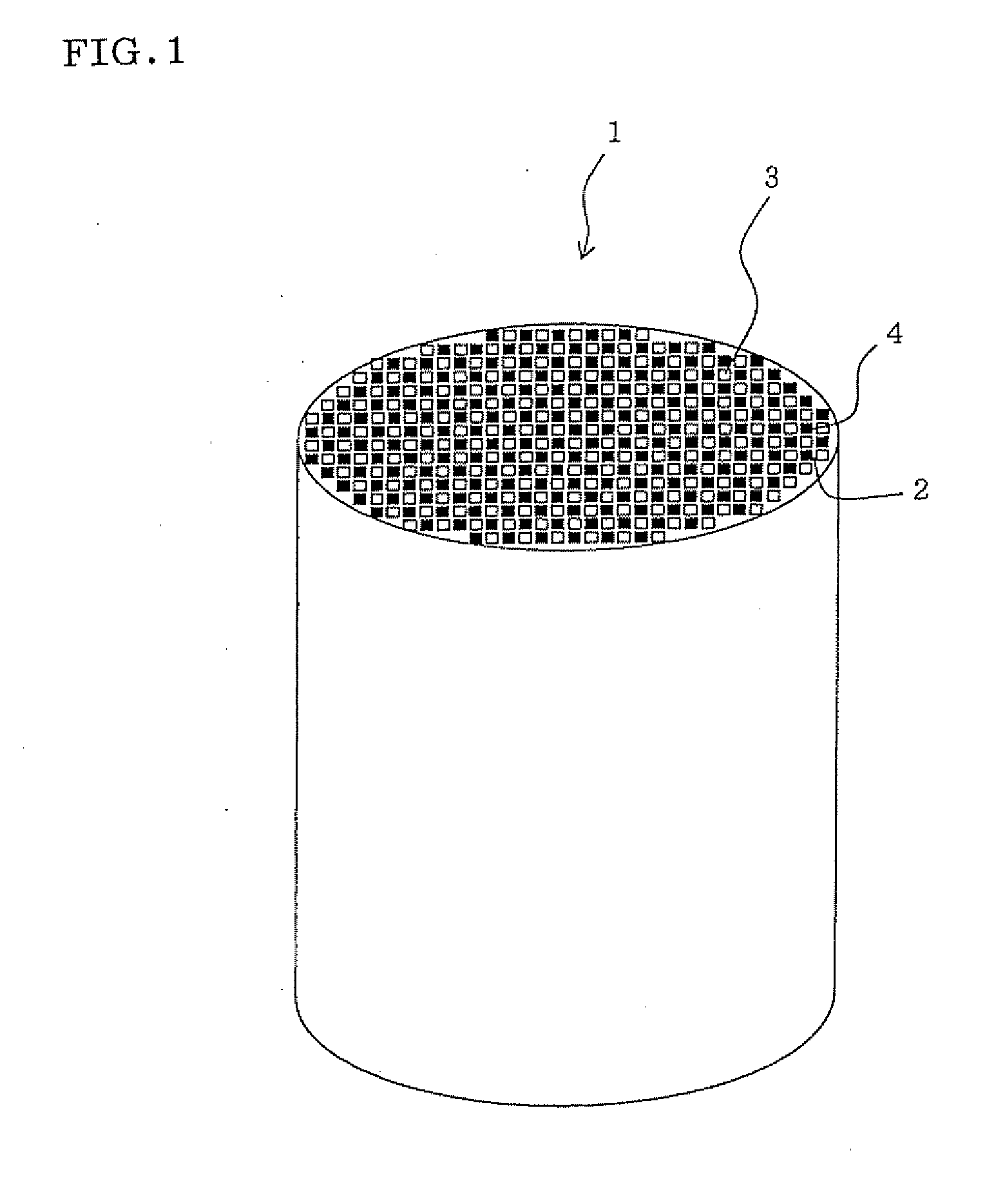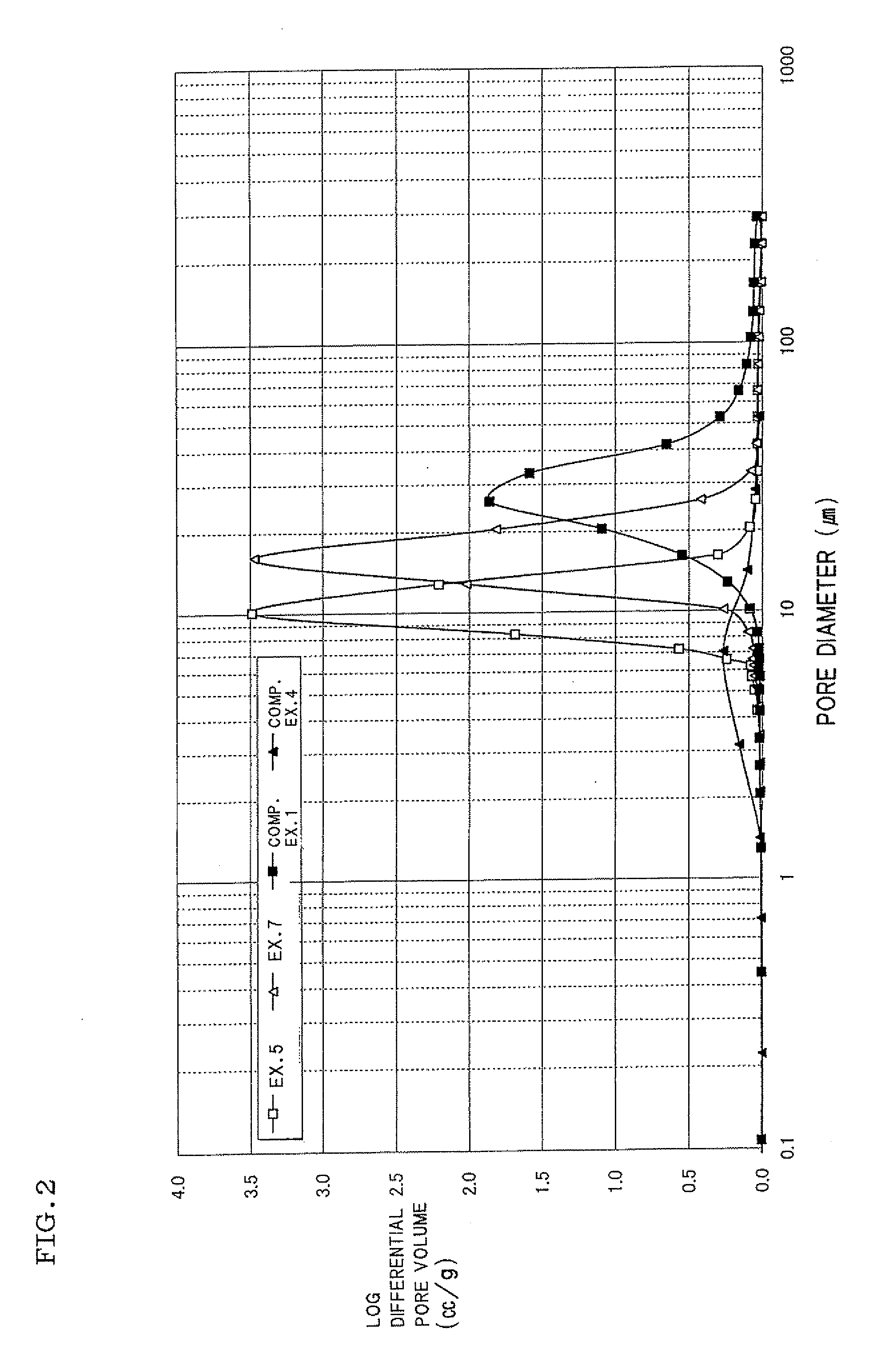Process for producing honeycomb structure
a honeycomb structure and honeycomb technology, applied in chemical/physical processes, domestic applications, machines/engines, etc., can solve the problems of difficult production of honeycomb structures of high porosity, high clay kneading, and high cost, and achieve high porosity, high porosity, and high porosity.
- Summary
- Abstract
- Description
- Claims
- Application Information
AI Technical Summary
Benefits of technology
Problems solved by technology
Method used
Image
Examples
example 1
[0080]There was produced a cordierite-based honeycomb structure (a honeycomb filter) having plugging portions each formed alternately at one opening of each cell so that they look checkerwise at each end of the honeycomb structure. As a specific production process, as shown in Table 1, 44 volume parts of talc A, 22 volume parts of kaolin A, 19 volume parts of alumina A, and 15 volume parts of silica A were mixed to prepare a cordierite-forming raw material. In Table 1 is shown the compounding ratio of the cordierite-forming raw material prepared. In Table 2 are shown the 10 volume % particle size (V10) [μm], 50 volume % particle size (V50) [μm] and 90 volume % particle size (V90) [μm] in the volume particle size distribution and the volume particle size distribution ratio (V90 / V10) of each of the raw materials used in Examples.
TABLE 1Name ofExamplesComparative ExamplesComponent1234567891234567Cordierite-Talc A444447——44474448———10212723formingTalc B———44————————————rawTalc C————44——...
examples 2 to 9
[0088]Honeycomb structures were produced in the same manner as in Example 1 except that the compounding ratio of each of the components constituting the cordierite-forming raw material was changed as shown in Tables 1 and 2. Each honeycomb structure obtained was measured for porosity (%). The results of measurement are shown in Table 3.
PUM
| Property | Measurement | Unit |
|---|---|---|
| particle size | aaaaa | aaaaa |
| particle size | aaaaa | aaaaa |
| particle size | aaaaa | aaaaa |
Abstract
Description
Claims
Application Information
 Login to View More
Login to View More - R&D
- Intellectual Property
- Life Sciences
- Materials
- Tech Scout
- Unparalleled Data Quality
- Higher Quality Content
- 60% Fewer Hallucinations
Browse by: Latest US Patents, China's latest patents, Technical Efficacy Thesaurus, Application Domain, Technology Topic, Popular Technical Reports.
© 2025 PatSnap. All rights reserved.Legal|Privacy policy|Modern Slavery Act Transparency Statement|Sitemap|About US| Contact US: help@patsnap.com



